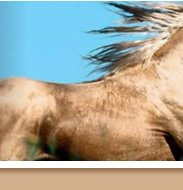![]()
![]()
![]()
![]()
![]()
![]()

![]()
![]()
![]()
![]()
![]()
ArticlesThe Irish Wolfhound A Big Dog with a Bigger HeartThe Irish Wolfhound became so popular as a gift a couple of centuries ago that exportation from Britain was banned for several decades. They are a very large dog, sometimes weighing in at 150 pounds. The Irish Wolfhound has a shaggy coat and a muscular body, but these dogs require careful care and attention. The popularity of the Irish Wolfhound was probably due to the fact that it was favored among the nobility and wealthy families. There's no doubt that the large, shaggy appearance of these giants is what attracted the attention of so many people. The breed originated as a hunting dog, mainly for big game. Elk, wolves and hogs were among the animals the Irish Wolfhound were trained to track - hence the selective breeding to gain the large size. This is the tallest breed of dog in existence. The popularity of the breed and the constant exportation combined with the fact that the fox hunts in England killed out the entire fox population led to the near-demise of the Irish Wolfhound. In fact, it's noted that there were probably no full-blood Irish Wolfhounds left in Ireland at some point during the 17th Century. When the breed was returned to its native country, new bloodlines were introduced - including that of the Great Dane - in an effort to revitalize the breed. As a rule, the Irish Wolfhound tends toward light colors - gray or white. Some have darker markings, including black or red overcoats. White, gray, red, brindle and black are all recognized by the AKC standard. The sheer size of these dogs makes them a good choice for a guard dog, but it's important to note that guarding doesn't come naturally to this breed. They do tend to be loyal to a fault and will usually prefer to spend time with their family above and beyond all other activities. They do like to play, but their size makes them clumsy - not typically a good choice for an indoor pet, especially if there's limited space. The Irish Wolfhound is usually very easy to train. Most who own, breed or train these dogs seem to think that these canines are very anxious to please and will try to anticipate what is wanted. Their willingness to learn makes them a good choice for learning tricks, though what they can do will be somewhat limited by their size. Remember that early training is a must, because a grown Irish Wolfhound will likely be too big to be controlled by a normal-sized person. One of the negative points of the Irish Wolfhound is this dog's tendency toward a short life. They typically live only about seven or eight years, mostly due to their large size. Their size also makes them susceptible to hip problems. Young Irish Wolfhounds, unlike most puppies, need limited exercise. Long walks are not a good idea until the muscle mass catches up to the rapidly growing frame of the Irish Wolfhound pup. For more information on Irish Wolfhounds and other Popular, and not-so-popular breeds of dogs, visit The Hound Dog Directory Horses How to Get Free Garbage Bags - The scenario: A newlywed couple moves into their new home. supply SinoNSH GER Gas Engine Oil Regenerationoil purifieroilpurificationoil filtrationoil rec - NSH GER Gas engine oil regeneration(oil purifier,oil purification,oil filtration,oil filter,oil treatment,oil recycling,oil regeneration,oil filtering, oil reclaim plant,oil recovery,waste managment,oil disposal,oil reclamation. Enjoying the Beauty of the Spring Season - The spring of the year is a favorite season for many people, and it is certainly easy to understand why this is so. sell sinonsh insulation oilrecyclingfilterpurifierfiltrationpurificationregenerationtreatme - VFD--Double-Stage High-Efficiency Vacuum Insulation Oil Purifier Application VFD series is mainly used to improve the properties of insulation oil. New York Green Building Initiative - As is occurring in many states, New York is trying to promote Green Building practices. more... |
![]()
![]()
ęCopyright 2025 Alhaja.net All rights reserved.
Unauthorized duplication in part or whole strictly prohibited by international
copyright law.
![]()



